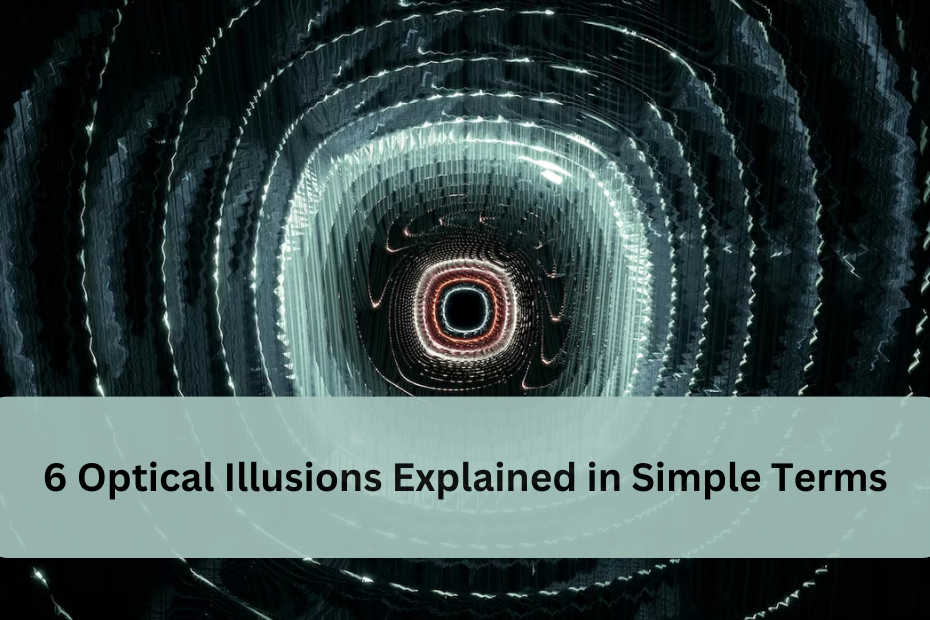Starting Off
Optical illusions have fascinated humans for centuries, captivating our minds with their ability to deceive and distort reality. Understanding these illusions not only provides insight into the complexities of human perception but also offers a glimpse into the inner workings of the brain. In this article, we will explore six optical illusions, including the intriguing Rye Bread Bar illusion, and unravel the mysteries behind their mesmerizing effects.
What Are Optical Illusions?
Optical illusions are visual phenomena that trick the brain into perceiving something that does not match the physical reality of the scene. These illusions exploit the brain’s tendency to make assumptions and interpretations based on limited information received from the eyes.
Optical Illusion
The Rye Bread Bar illusion is a captivating example of how our brains can be deceived by simple visual cues. In this illusion, two bars of identical length are placed next to each other, but one appears longer than the other due to the surrounding context. This illusion demonstrates the role of contextual information in shaping our perception of size and distance.
The Hermann Grid Illusion
Named after its discoverer, Ludimar Hermann, the Hermann Grid illusion consists of a grid of black squares with white spaces in between. When staring at the grid, viewers perceive gray blobs at the intersections, despite there being no actual gray areas present. This illusion highlights the complex interactions between neighboring visual elements in shaping our perception.
The Ponzo Illusion
The Ponzo illusion involves two identical lines placed over a background of converging lines. Despite being the same length, the line positioned closer to the converging lines appears longer than the line placed further away. This illusion illustrates how depth cues influence our perception of size and distance.
The Muller-Lyer Illusion
The Muller-Lyer illusion consists of two lines of equal length with arrowheads pointing inwards or outwards at their ends. The line with outward-pointing arrowheads appears longer than the line with inward-pointing arrowheads, even though they are the same length. This illusion reveals the brain’s susceptibility to visual cues such as angles and perspective.
The Motion Aftereffect Illusion
The Motion Aftereffect illusion occurs when prolonged exposure to a moving stimulus causes stationary objects to appear to move in the opposite direction. This phenomenon demonstrates how the brain adapts to constant sensory input, resulting in perceptual shifts.
The Ames Room Illusion
The Ames Room illusion is a three-dimensional optical illusion that distorts the perception of size and depth. Despite appearing rectangular in shape, the room is actually trapezoidal, creating the illusion that people standing at opposite ends are drastically different in size. This illusion challenges our understanding of spatial perception and perspective.
Why Do Optical Illusions Occur?
There are a number of elements that contribute to the formation of optical illusions. These factors include the brain’s tendency to rely on assumptions, contextual clues, and preconceived notions. It is through these illusions that the complexities of visual processing and the limitations of human perception are brought to light.
Practical Applications of Optical Illusions
Optical illusions have practical applications in various fields, including art, design, and psychology. Artists often use illusions to create visually striking compositions, while researchers utilize them to study perception and cognition.
How to Experience Optical Illusions
To fully appreciate optical illusions, it’s essential to observe them under controlled conditions and consider their underlying mechanisms. Experimenting with different viewing angles and contexts can enhance the understanding of these captivating phenomena.
Conclusion
In conclusion, optical illusions offer a fascinating glimpse into the inner workings of the human mind. By unraveling the mysteries behind these illusions, we gain valuable insights into the complexities of perception and cognition. Whether used for entertainment, artistic expression, or scientific inquiry, optical illusions continue to intrigue and inspire us with their mesmerizing effects.
FAQs about Optical Illusions:
What causes optical illusions? Optical illusions occur due to the brain’s interpretation of visual information, which can be influenced by factors such as context, perspective, and perceptual biases.
Are optical illusions the same for everyone? While some optical illusions are universal, individual differences in perception can lead to variations in how people experience and interpret them.
Can optical illusions be used in therapy? Some therapeutic approaches, such as cognitive-behavioral therapy, utilize optical illusions to challenge distorted thinking patterns and promote cognitive restructuring.
Are there any real-world applications of optical illusions? Optical illusions have practical applications in fields such as art, design, advertising, and psychology, where they are used to create visually compelling compositions, attract attention, and study perception.
How can I create my own optical illusions? Creating optical illusions involves manipulating visual elements such as size, shape, color, and perspective to deceive the viewer’s perception. Experimenting with different techniques and concepts can lead to the development of unique and captivating illusions.
